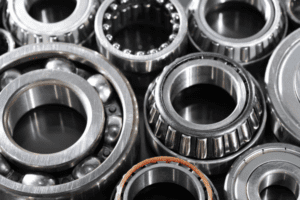 With an astounding $119 billion in annual revenue, Kroger is the biggest supermarket chain in the world and the third-largest retail company of all. Its closest U.S. competitor is Albertsons, with nearly $60 billion in revenue.
With an astounding $119 billion in annual revenue, Kroger is the biggest supermarket chain in the world and the third-largest retail company of all. Its closest U.S. competitor is Albertsons, with nearly $60 billion in revenue.
When you go to one of these stores, you’re sure to notice a variety of differences – from the layout to the selection of frozen pizza in those refrigerated cases. But there’s one thing that will inevitably be the same: The temperature will be cool, no matter what the weather outside may be.
Grocery Stores Must Carefully Calibrate Building Systems for Efficient Refrigeration
FDA guidelines are built around avoiding the danger zone where bacteria can proliferate. That means keeping cold foods at 41 degrees Fahrenheit or below while maintaining hot foods at 135 degrees Fahrenheit or higher.
Due to its intensive refrigeration needs, the average energy use of grocery stores can be extremely high. EPA estimates have placed average annual energy costs above $4 per square foot – and that figure is poised to rise.
Grocery stores face a number of temperature control challenges other businesses do not:
Variance Between Hot Zones and Cold Zones
Prepared foods are becoming a major driver of revenue for many grocery stores. For some stores, they are so important as to be an integral part of the brand. Costco has maintained its hot dog and soda combo at just $1.50 since 1985, with its founder once telling the CEO, “If you raise the [price of the] hot dog, I will kill you.”
That’s dedication! Unfortunately, many smaller grocery stores are less prepared for the “grocerant” concept than Costco is. Hot food preparation areas represent more heat than a refrigeration system needs to contend with. That naturally results in longer, more intensive cooling cycles, which affects equipment longevity.
Ambient Energy Loss
Grocery stores can suffer from ambient energy loss for a range of reasons. Many grocery stores are refitting their doors to create a tighter seal when closed. The longtime use of sensor-operated automatic doors is also seeing renewed scrutiny, as these may leave the store open to the outside air longer than necessary.
As buildings age, it gets more and more difficult to manage internal temperatures. Problems with the building’s outer envelope interfere with natural heat transfer throughout a space, making it hotter in the summer and colder in the winter. Intensive retrofitting can be a challenge, however, especially for 24-hour stores.
Lights and Occupancy
Lights and refrigeration are often combined in estimates of grocery store energy usage, making it harder to untangle one from the other. Taken together, though, it is generally accepted that these are the two biggest energy draws. Fluorescent bulbs or LED bulbs are widely used in grocery stores due to their reduced heat output.
One modern approach is to tie the HVAC in with a building management system. These systems use a network of precise sensors to determine the total occupancy of an area and micro-adjust the lighting and temperature in that zone to fit. Refrigeration systems can also be designed to reclaim and make use of waste heat.
Savings of millions of dollars a year could hang in the balance based on fundamental engineering decisions that shape the refrigeration system. Once those decisions are made, they are often difficult, costly, and potentially risky to undo. With that in mind, grocery stores like Kroger and Albertsons often choose Copeland compressors.
Copeland is a Trusted Brand with a Long History in Commercial Compressors
U.S.-based Copeland has been a major player in commercial compressor engineering since the 1930s. Always an innovator, it was one of the first to successfully bring a semi-hermetic commercial compressor to market. These days, Copeland is a favorite of the leading grocery store brands, like Albertsons and Kroger for many reasons:
Longevity and Reliability
A standard commercial compressor operates in the field for about 8-10 years, assuming sound maintenance practices are adhered to. Copeland has a strong reputation for maintaining output later in life than many other brands. Years of experience have allowed Copeland to eliminate many points of fault.
Ease of Use and Maintenance
Copeland commercial compressors are easier to install, adjust, and maintain than many competing brands. Since Copeland is an American-based company, finding the components required to keep your compressor in operation is usually straightforward. Many refrigeration technicians are deeply familiar with the brand, as well.
Mechanical Efficiency and Power
Grocery stores have a limited influence over precisely how many compressors they need to use, with big changes in configuration planned rigorously in advance. Copeland brand compressors help manage overhead due to their energy efficiency, combined with ability to push the levels of refrigeration grocery stores demand.
Choosing remanufactured Copeland compressors makes it easier for grocery stores to field a large number of compressor units at a lower cost. Choosing Copeland ensures they get the highest level of reliability, power, and efficiency.












